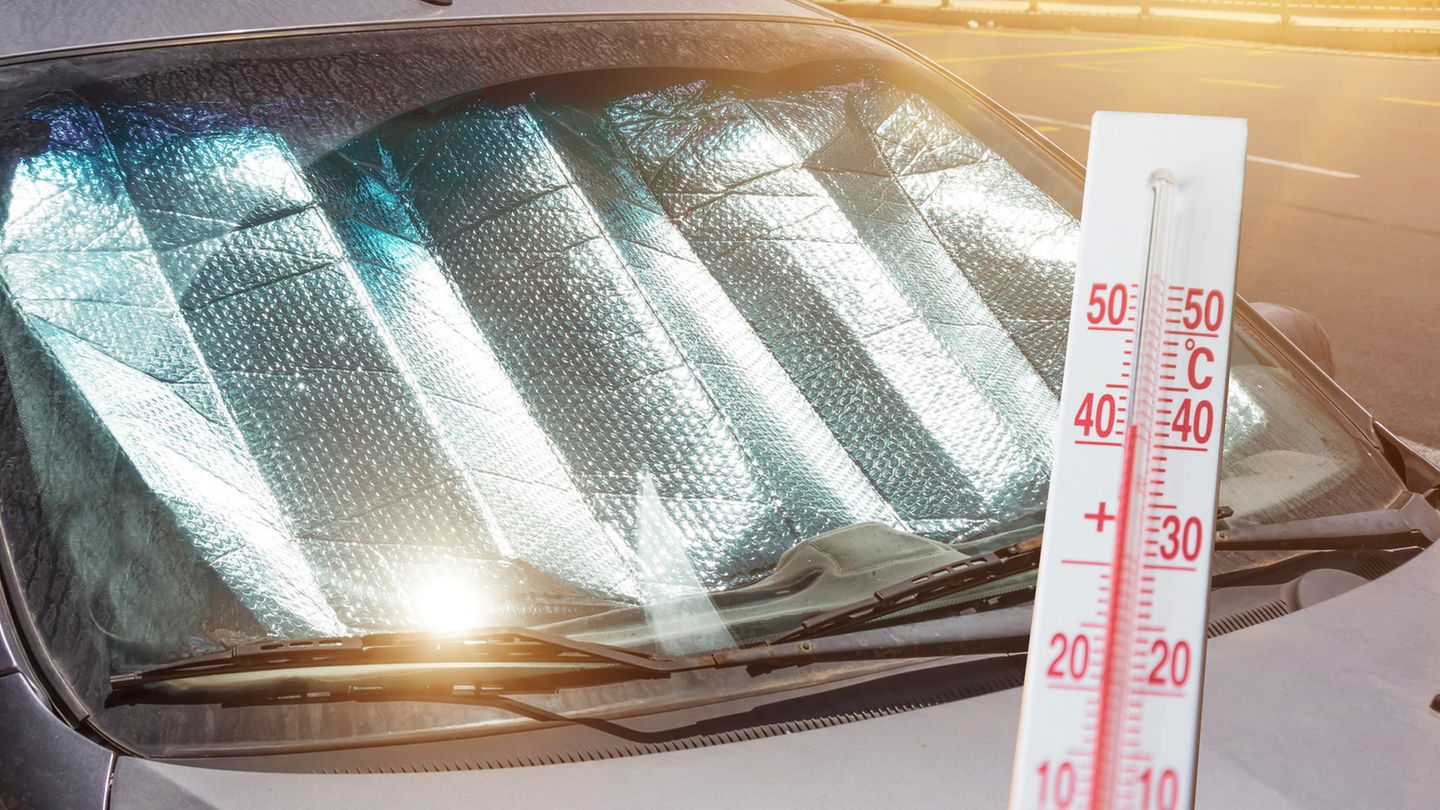If a car is left in the sun, the temperature inside the vehicle can quickly rise to up to 60 degrees. There are all kinds of accessories to prevent this. But which sun protection has the greatest effect? The ADAC has found out.
Cars can heat up a lot, especially in summer: if a vehicle is parked in the sun for a long time, what is known as heat buildup occurs – for this reason, no living creature (neither human nor animal) should be left in a stationary car. But continuing to drive is also torture as long as the air conditioning has not yet cooled down the interior temperature. This makes it all the more sensible to install sun protection. To find out which model is best at combating heat buildup, the Landsberg am Lech company tested different accessories on seven vehicles. We will tell you below what the engineers’ results were.
A note in advance: When buying, make sure that the sun protection is tailored to your car. Here, too, there are different sizes that are not equally suitable for every vehicle.
ADAC tests sun protection for cars
Tint film
You have the option of tinting the side windows and rear window of your car to reduce heat build-up. According to the ADAC, the desired effect is only slight – to be precise, the interior temperature only drops by two degrees – but the surface temperature on the back seat should drop noticeably: “Without window tinting it is 57 degrees, with tinting it is only 48 degrees.” It is important for you to know, however, that window tinting is subject to certain regulations. Read on to find out exactly which ones.
Half garage
According to the study by the ADAC Technical Center, the best sun protection for the car. This is a large tarpaulin that is stretched around the vehicle so that all the windows are covered. During the test phase, it was found that the interior had “only” heated up to 43 degrees after installation – ten degrees less than in a car that has no sun protection at all.
Sun visor
However, the application of the : A sunshade for the windscreen that is installed from the inside. The temperature inside the vehicle was reduced by four degrees – so there is nothing to be said against installing it, even if the difference to a car without sunshade is hardly noticeable. The ADAC also points out that the effect only occurs when the cover sits completely on the windscreen. “This is often not the case and the effect is therefore even less.”
Sun protection film
In addition to the half garage, the – according to the German Automobile Club e. V. – represents a satisfactory solution: In contrast to the sun visor, the sunshade is attached to the outside of the windshield. This is intended to reflect the sun’s rays so that the interior of the vehicle (especially the dashboard and seats) does not heat up as much. According to the study, the air temperature in the test vehicle was eight degrees “colder” than that in a car without sunshade.
And two more tips at the end: Direct sunlight causes the dashboard and steering wheel to heat up so much (up to 70 degrees is possible) that you could burn yourself if it comes into contact with your skin. For this reason, the ADAC recommends installing sun protection – or covering both to reduce the surface temperature. It is also advisable not to leave sensitive devices (such as your smartphone) in the car when it is parked in the sun.
Source:
More information can be found here.
Source: Stern
I’m a recent graduate of the University of Missouri with a degree in journalism. I started working as a news reporter for 24 Hours World about two years ago, and I’ve been writing articles ever since. My main focus is automotive news, but I’ve also written about politics, lifestyle, and entertainment.




